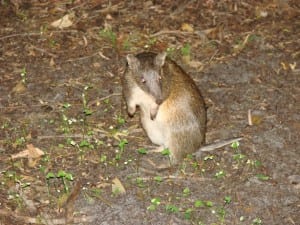Trapped in the desert – part one
By Jack Ashby, on 10 March 2011
From April 2010 I spent about five months undertaking several zoological field projects across Australia. I worked with government agencies, universities and NGOs on conservation and ecology studies ranging from Tasmanian devil facial tumour disease, the effect of fire, rain and introduced predators on desert ecology and how to poison cats. This series of blog posts is a delayed account of my time in the field.
Week Eight
Having spent the last month in the cool temperate rainforests, alpine highlands and green misty sclerophyll forests of Tasmania working on devil facial tumour disease fieldwork, it was going to take some adjusting to the climate I was expecting camping in the middle of the Simpson Desert. Fortunately it wasn’t a sudden change as it took three days for the team from the University of Sydney to reach camp, 2400km northwest, nearly halfway up the border of Queensland, and the Northern Territory. (more…)
 Close
Close




